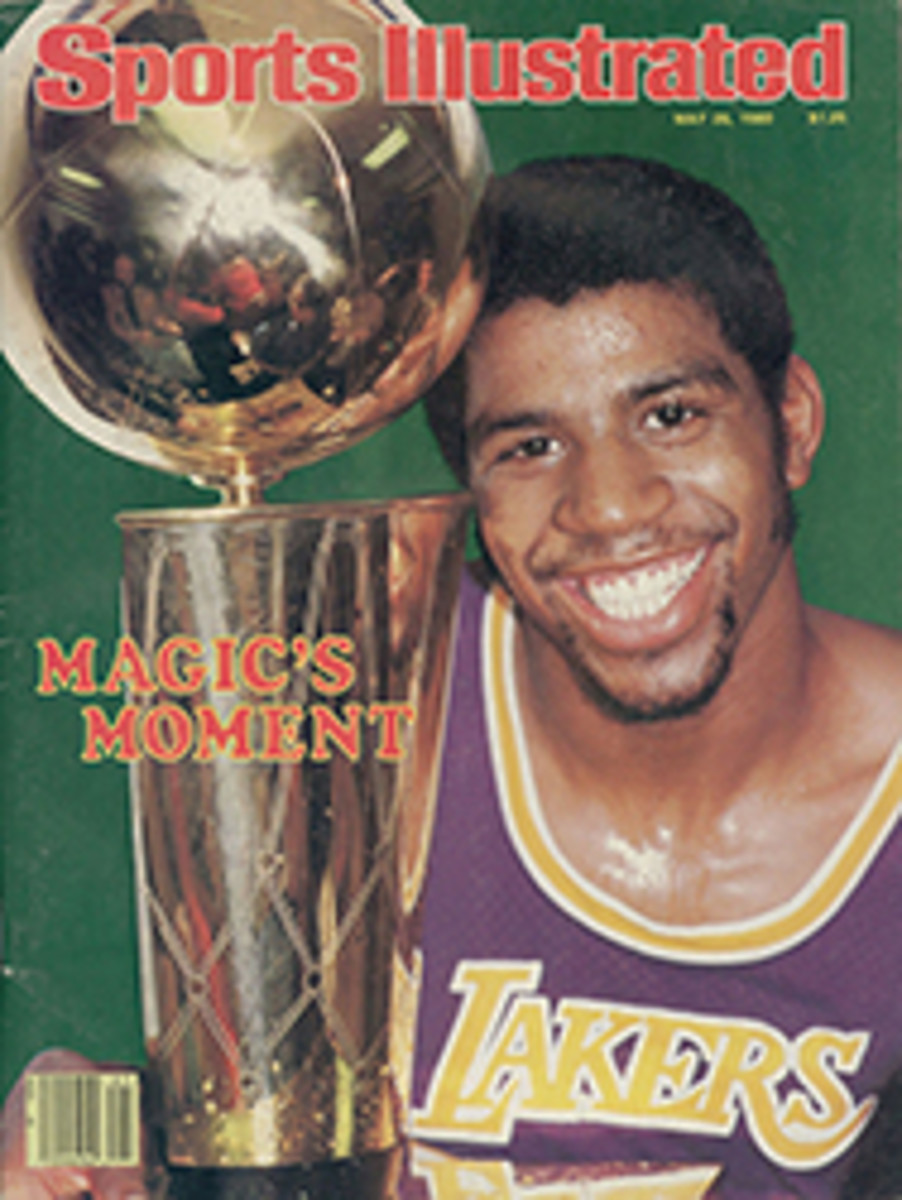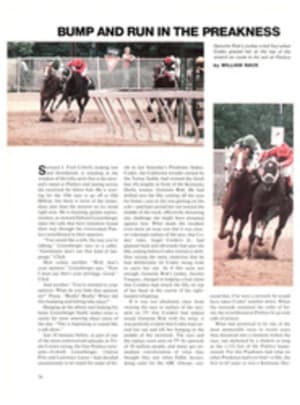
The whole truth is...
An eight-oared crew has a bad race, and no one can really say why. The oarsman sits locked in his world of pain, and who knows if he pulled to his limit? Does he! The coxswain will tell one version of the race, then another; what is truth, anyway, in the midst of five minutes of frenzy? Seen from the shore, the shells pass quickly by—knees, elbows, flashing oar blades, all precise and in unison—and the race ends too soon. It is impossible to analyze, but someone always tries. The best crew won, the coaches always say, but did that new boat help? Or the wind, gusting from side to side, whom did it hurt? And what of the water, all treacherous with whitecaps?
It has been a prime year for such ruminations. Last week's Pac-10 rowing championships in a Redwood Shores, Calif. lagoon was billed as a showdown between Washington and undefeated Cal. The Golden Bears had taken three straight races from the once all-mighty Huskies, the last just three weeks earlier at Oakland, and an era of Cal supremacy on the West Coast seemed aborning. The Bears were a wonder to behold, in part because they had a 19-year-old freshman, Dan Louis, as their stroke. He had rowed in high school and sculled on last year's U.S. national team, getting two seconds, a third and a fourth on a European summer tour. And among the other Cal wonders was sophomore Four Oar Randy Thomas, weighing only 185 pounds but having immense biceps. He had never rowed before arriving at Cal, but he did have some athletic ability, having lettered in football, baseball, soccer, track, swimming and tennis in his senior year of high school at Berkeley.
Behind Thomas at three oar was 207-pound Peter Matthiessen, nicknamed Mongo after the creature who punched out a horse in the film Blazing Saddles. As a clumsy freshman, Matthiessen splintered oars and seats, prompting his teammates to call him Chainsaw. Now, says Cal Coach Steve Gladstone, "He's like an iron hand in a silk glove." It takes an ironlike body to score a 3,745 on the ergometer, as Matthiessen does, or a 3,850, as Five Oar Dave Reddick does, or a 3,900, as Six Oar Brad Stine does.
Cal had geared its winter training to April's San Diego Crew Classic, where Cal would have its only chance to row Harvard. But a broken sewer main contaminated Mission Bay, and the regatta was canceled. So the Bears took their frustration and all that conditioning out on the Pac-10s and set off in pursuit of their first undefeated season in 20 years. And on the big-time-sports Cal campus a strange thing began to happen: people noticed the oarsmen. A professor stopped Coxswain Mark Zembsch and said, "Great job against Cornell." A checker in a supermarket offered Zembsch a discount. Cal football players shouted, "Do it to Washington!" And suddenly photos of the crew began appearing on the front pages of the San Francisco papers.
But the Bears would pay a price for their new success. Their April victory over Washington—the last of the string of three against the Huskies extending back to April 1979—provoked Washington Coach Dick Erickson to make the most dramatic and controversial lineup change of his 13-year career, and he did it literally overnight. Erickson switched the seats of two men, and he dropped three upperclassmen from the boat, inserting in their stead three sophomores, including, at two oar, his son Al. "My dad once told me that to make his boat I would have to be visibly better than anyone else," Al says.
"Well, he's right up there," says Erickson Sr., "one of our top 10 heavyweights in ERG scores and in running, two objective measures of rowing talent." At the Pac-10s Erickson Sr. was saying of the changes, "I brought us from a stoic, unemotional group to an enthusiastic, aggressive one."
The Washington crew got to California 36 hours early, about the time a non-Pac-10 regatta was ending in Los Angeles. The University of British Columbia eight, on its way home from that regatta, stopped off at Redwood Shores, which is outside San Francisco, and left its carbon-fiber Carbocraft shell with Erickson. In April UBC had lent the shell to the Canadian Olympic crew, which took it to Seattle and beat Erickson's boys. Erickson was impressed.
The Carbocraft was 40 pounds lighter and far more rigid than the wooden boat Washington had been using. By the time Pac-10 competition began, the Huskies had logged 7½ hours of practice in it, and Erickson said, "I've always felt there was no such thing as a fast chariot. But now I'm starting to wonder, and it's silly for me not to let my guys play with what may be the best toys. I know we were a boat length short of Cal in April, and I owe it to them to try something. So if we go down again to Cal, at least we go down trying." Erickson was chuckling now. "But don't tell Steve Gladstone," he said. "Let it just be a surprise. When he sees it, he'll say, 'Why, that old snake-oil salesman!' "
On the day before the Pac-10 final the Huskies won two qualifying heats in the borrowed boat, against Stanford and UCLA. After the first race senior Stroke Greg Giuliani said, "The boat is awfully shaky. We threw a few crabs." But after the second he seemed relieved. "It feels better every time," he said.
By then the Carbocraft boat was no longer a secret to Cal. The Bears' two oar, Craig Amerkhanian, was calling it "the Crabocraft," and on the eve of the race he said, "We haven't even pushed yet. If everyone in our boat reaches his God-given potential in the same race, no one will touch us. At the very least, it will be a real barn burner tomorrow."
Meanwhile, Cal was not the country's only undefeated crew. Harvard had yet to lose, having won the Eastern Sprints a week earlier on a Worcester, Mass. wind tunnel called Lake Quinsigamond. Coach Harry Parker's Crimson did it in a brand-new Carbocraft shell—its own—beating Yale, another Carbocraft owner, by a boat length. The Elis had used their shell in the Eastern Sprints of '78 and '79, winning both times, and one of three men who rowed in all three races, senior Steve Kiesling, has made some interesting observations on the subject of space-age material vs. old-fashioned human muscle and technique. Kiesling has written an as-yet-unpublished book on rowing, The Shell Game. Of his first sprints' victory he says, "The boat was nearly 30 pounds lighter...than the nearest competitor's, but saving 30 pounds when the gross weight of the boat and oarsmen approaches 2,000 pounds seems hardly significant. Nevertheless, if the competition believed we had an advantage, then we had one.... I believe that on that day we could have won dragging a battleship anchor."
The best crew always wins, of course. Everyone agrees on that, and nearly everyone wants a Carbocraft. So Harvard and Yale arrived at Quinsigamond with their futuristic shells, but it was still a classic confrontation. After all, the Crimson's shell bore the name Leverett Saltonstall '14, the Elis' James S. Rockefeller '24, and that was fitting for such an august rivalry. Masts and sails would have been less so, but more functional.
A 12-knot head wind gusted down the course, the shells bounced around like twigs in a freshet, and at the end of 25 strokes Harvard led Yale by half a length. Right at the start the Elis' port oarsmen had caught water badly with their oars, slowing the boat. Ted Tsomides, the Crimson coxswain, glanced over and the Yale five man was beside him. He called to his crew, "I've got the five man. Give me the four." At 500 meters he said, "I've got three. Now give me two." At 1,000, Yale, always strongest in the middle third of a race, made its move. The lake was a fury when Yale took a Power Ten and gained two seats. Tsomides responded with, "Now it's our turn. Let's take a 20," and Harvard got the seats back. Yale couldn't recover from its shaky start, and Harvard won by a length. The Crimson's time was 6:36.7, over six minutes for the first time this year.
The Harvard two oar, Kurt Teske, said, "When you consider what we lived through out there, Ted coxed the greatest race I've ever seen." As for the coxswain himself, he kept making changes in his account of the race, in the sequence of events, in the orders to his crew. "I was too close to really see what was happening," Tsomides said. Across the dock, the Yale Cox Guy Gregoire was shaking his head and saying, "I don't know where our trouble started."
It was easy to think of the early spring on the Charles in Cambridge, the whistling wind, the turbulent river. But one could also conjure up a vision of Harvard sprinting to victory dragging a battleship anchor. It had been Harvard's day, just as a week later it would be Washington's day against Cal.
The Huskies threw a few crabs at the start last Sunday morning. The boat seemed fluttery, but Washington led by a seat at 100 meters. That is what the announcer said, though later the Husky Cox, Eric Cohen, would say no, that the boats were even. What is truth in a crew race? Cal led by two seats at 500, Washington by one at 550, by a foot at 1,000 and, finally, by three-quarters of a length. Dick Erickson, ashore, was trembling.
Later Cal's Thomas was asked, "When was your biggest lead?"
"Who knows?" he replied. "I just bury my head and look up at the end."
And the Bears' Amerkhanian said of the Carbocraft, "It was mainly a mental thing. Just thinking it was faster helped their confidence."
In the last analysis, 32 young men rowed to their fullest capacities, or thereabouts, on two consecutive weekends, and half of them won. As Keats wrote of beauty and truth—and there is much beauty and many truths in rowing—"...that is all ye know...and all ye need to know."
PHOTO
From their Carbocraft, Harvard's Jay Smith, John Kelly and Charles Storey cheer victory over Yale.
PHOTO
Parker was Crimson-flushed with success.

